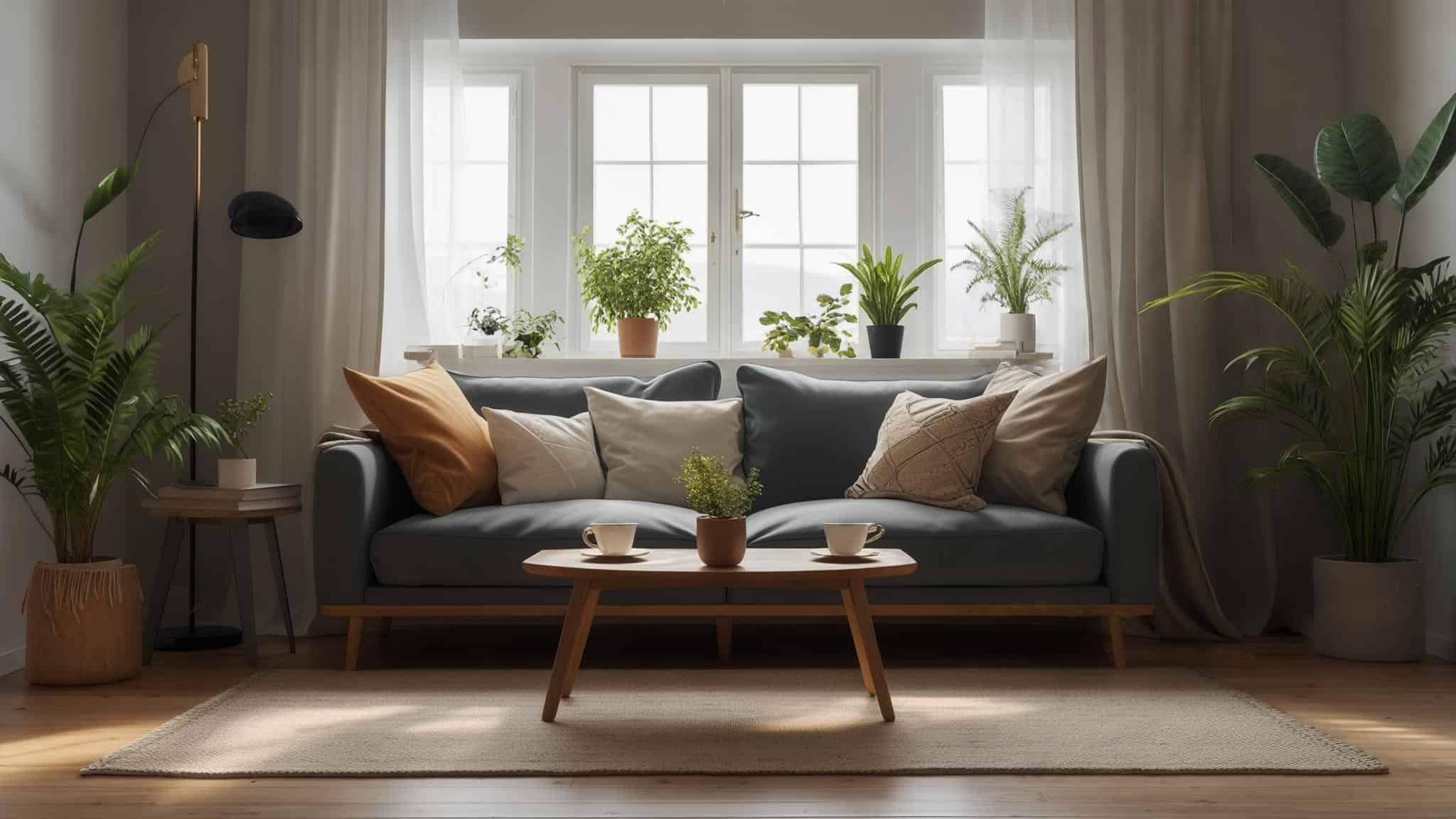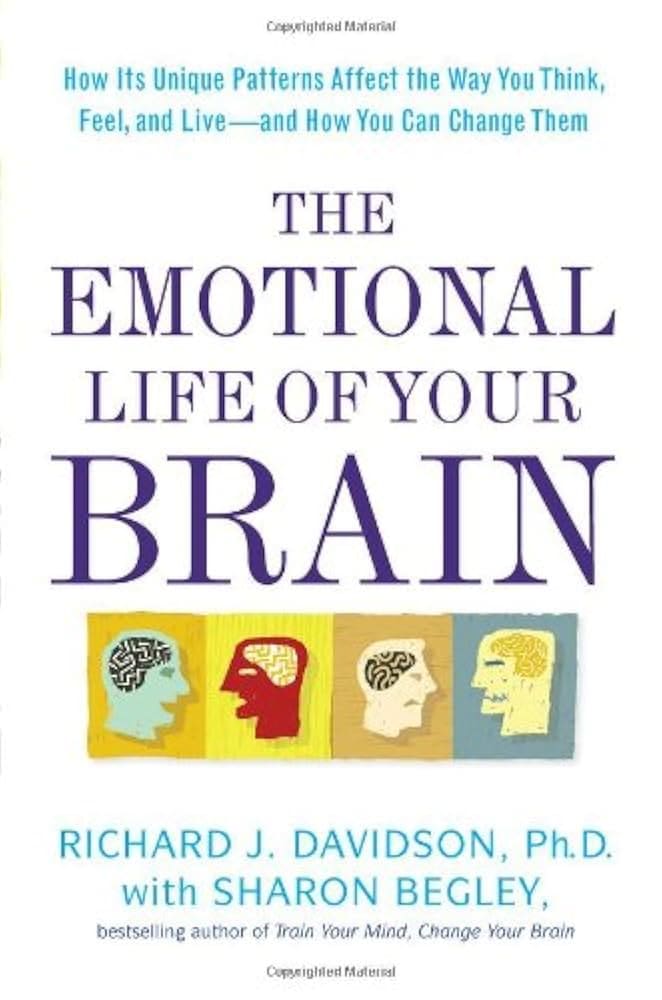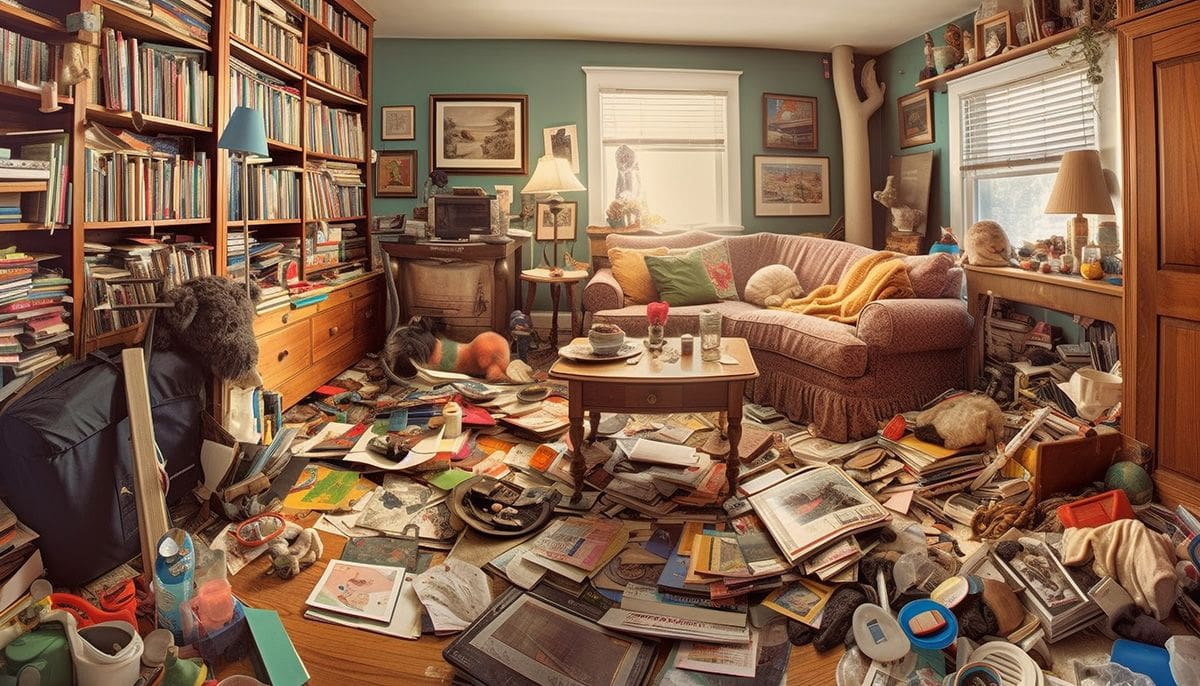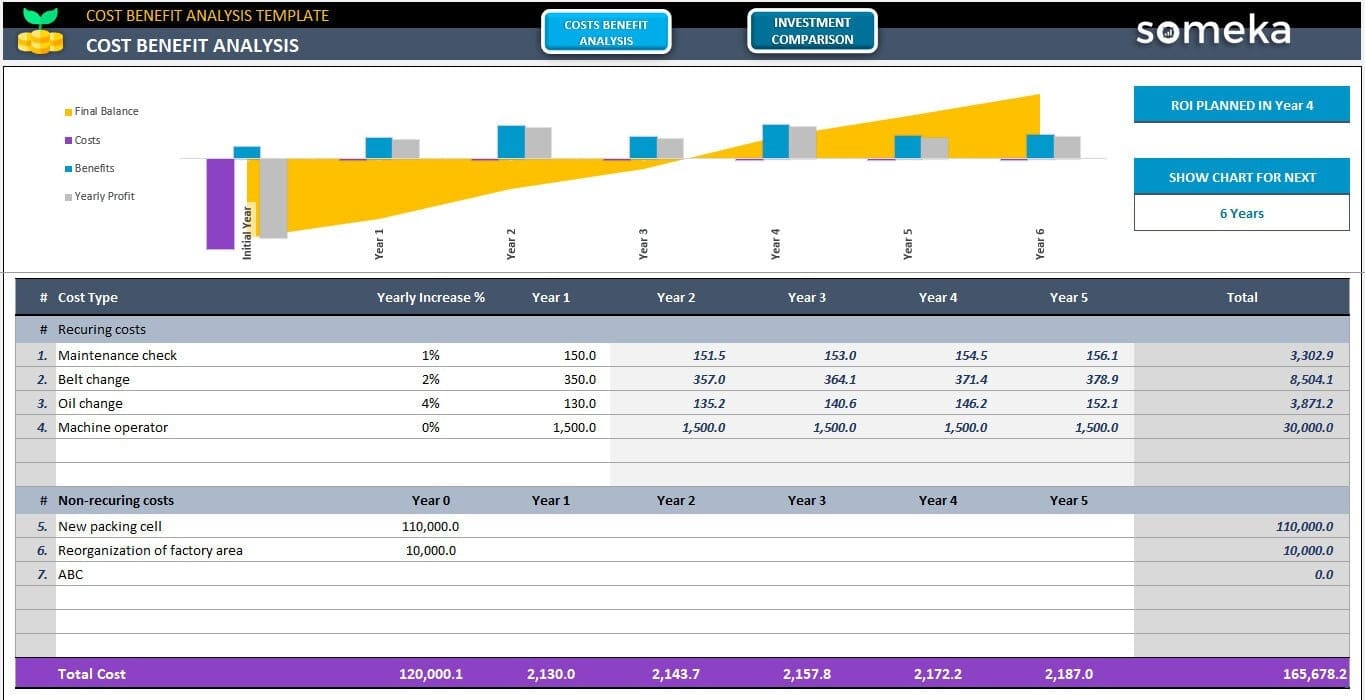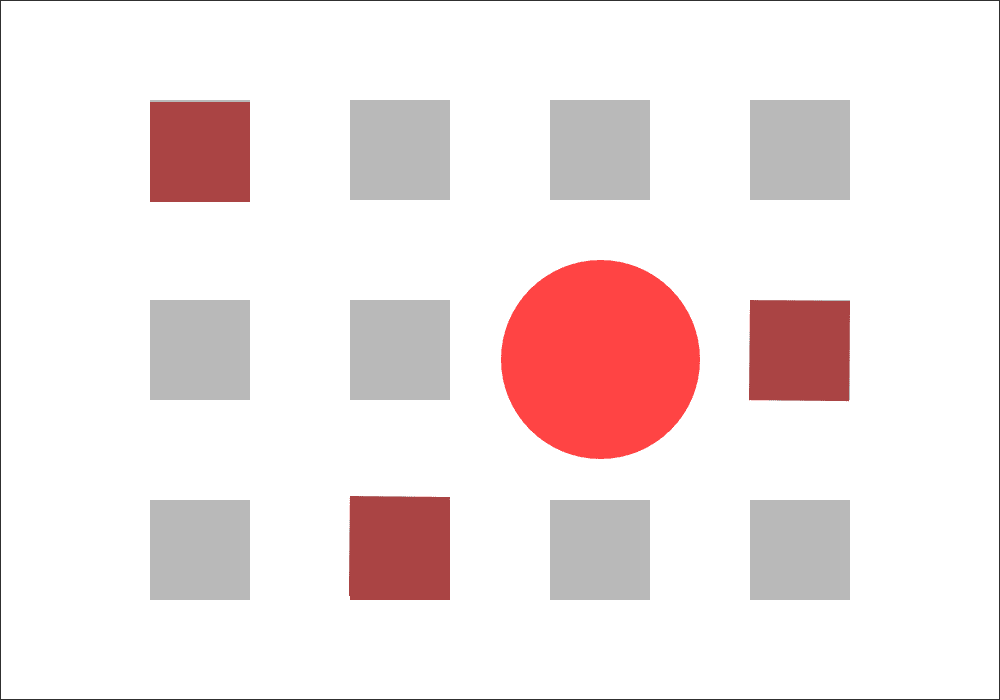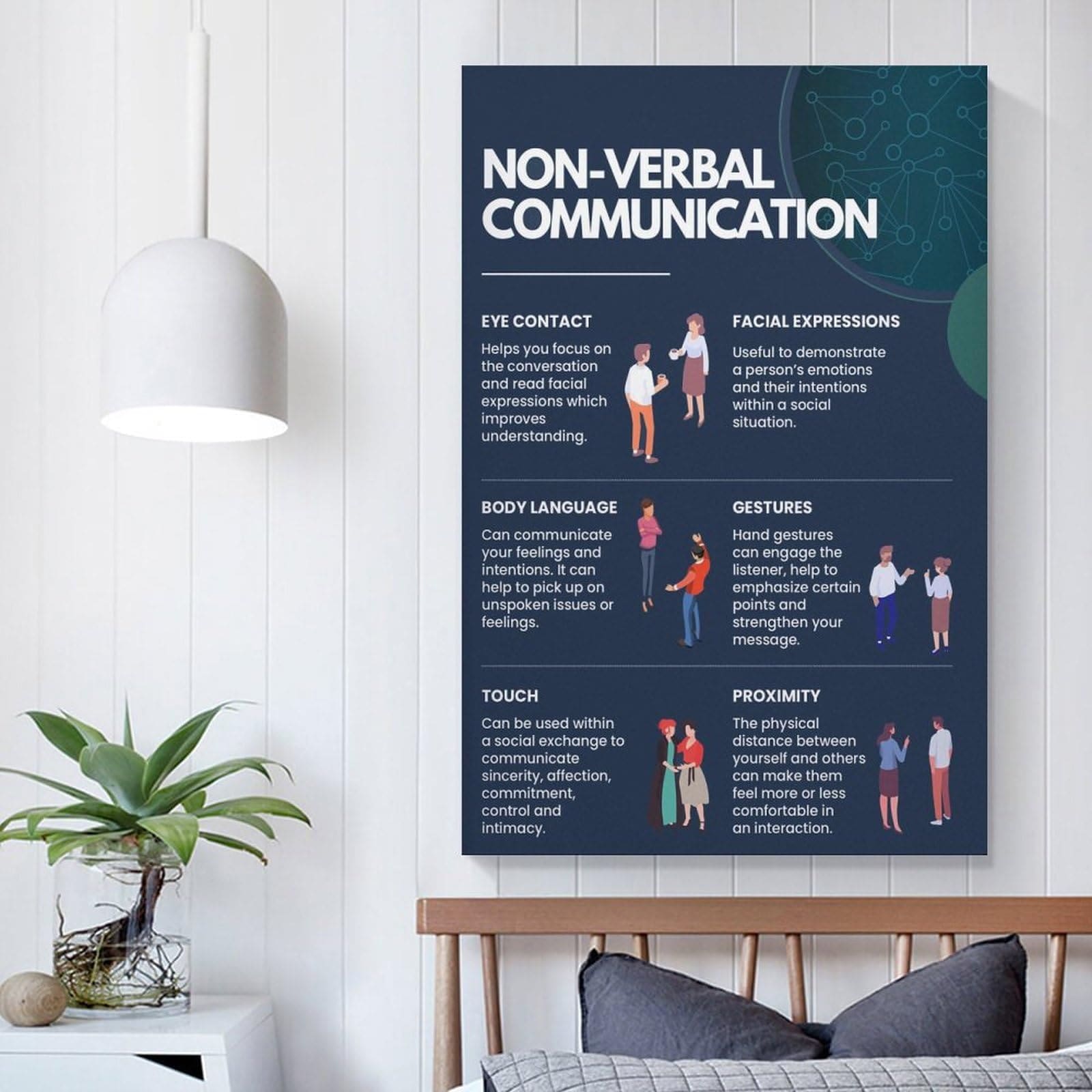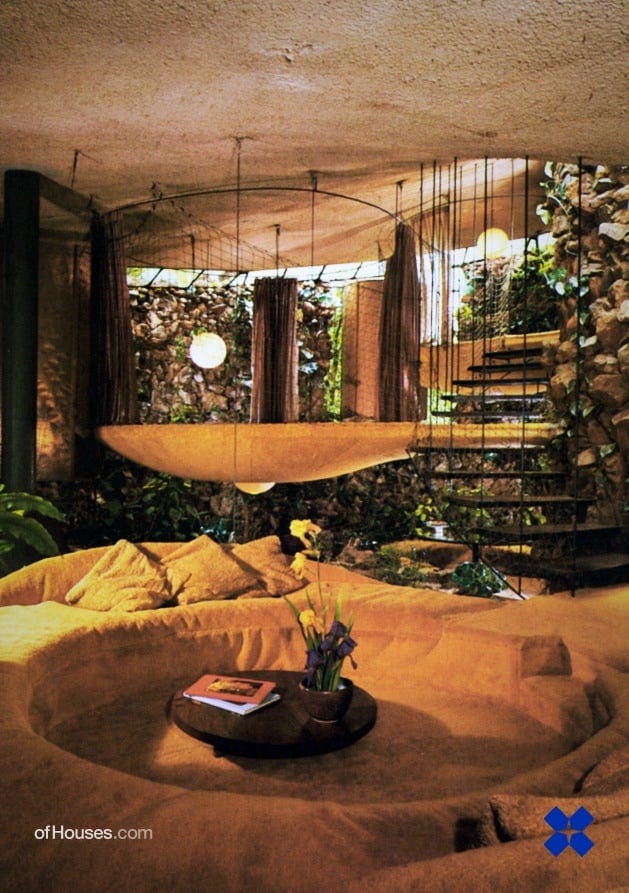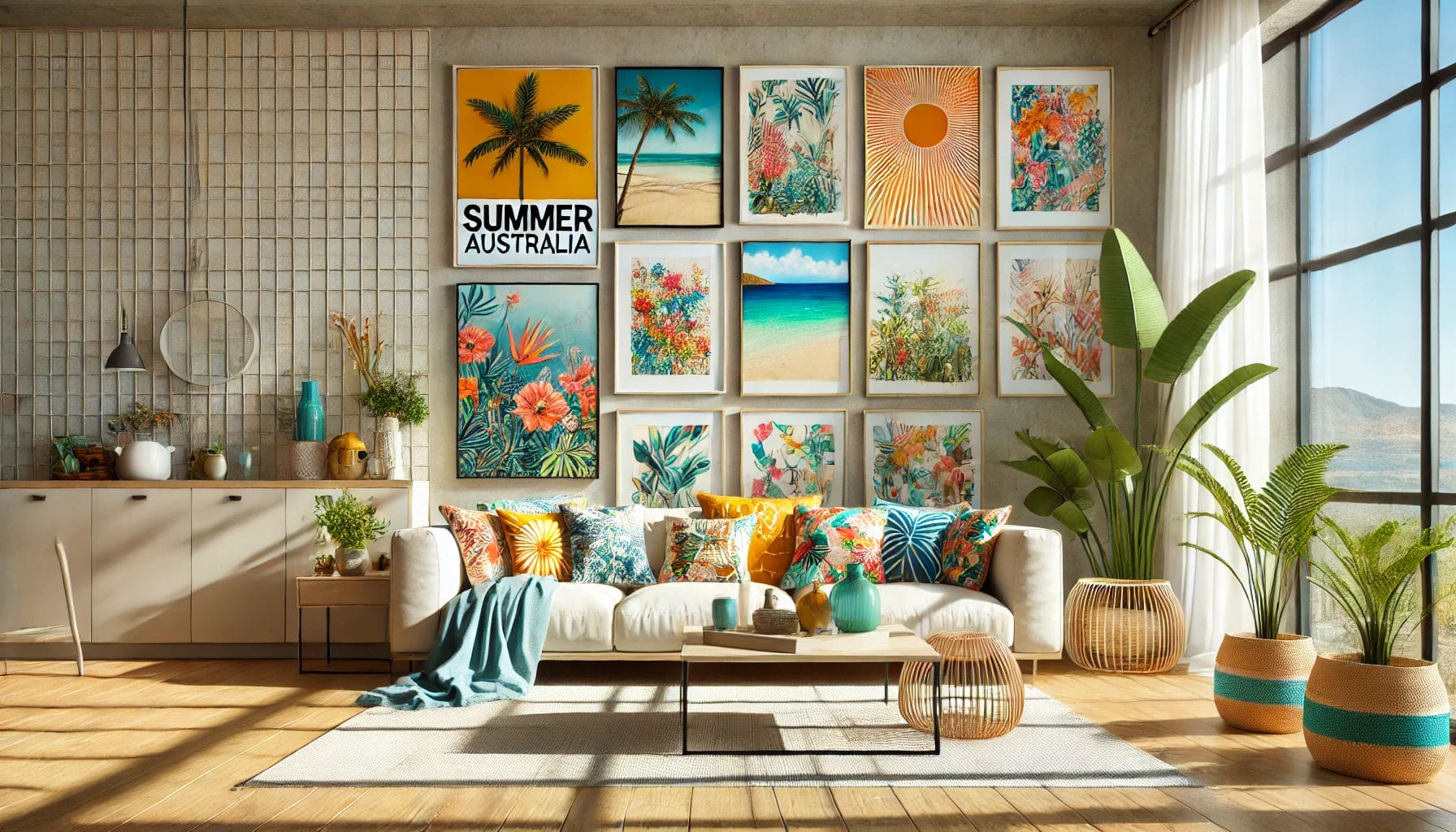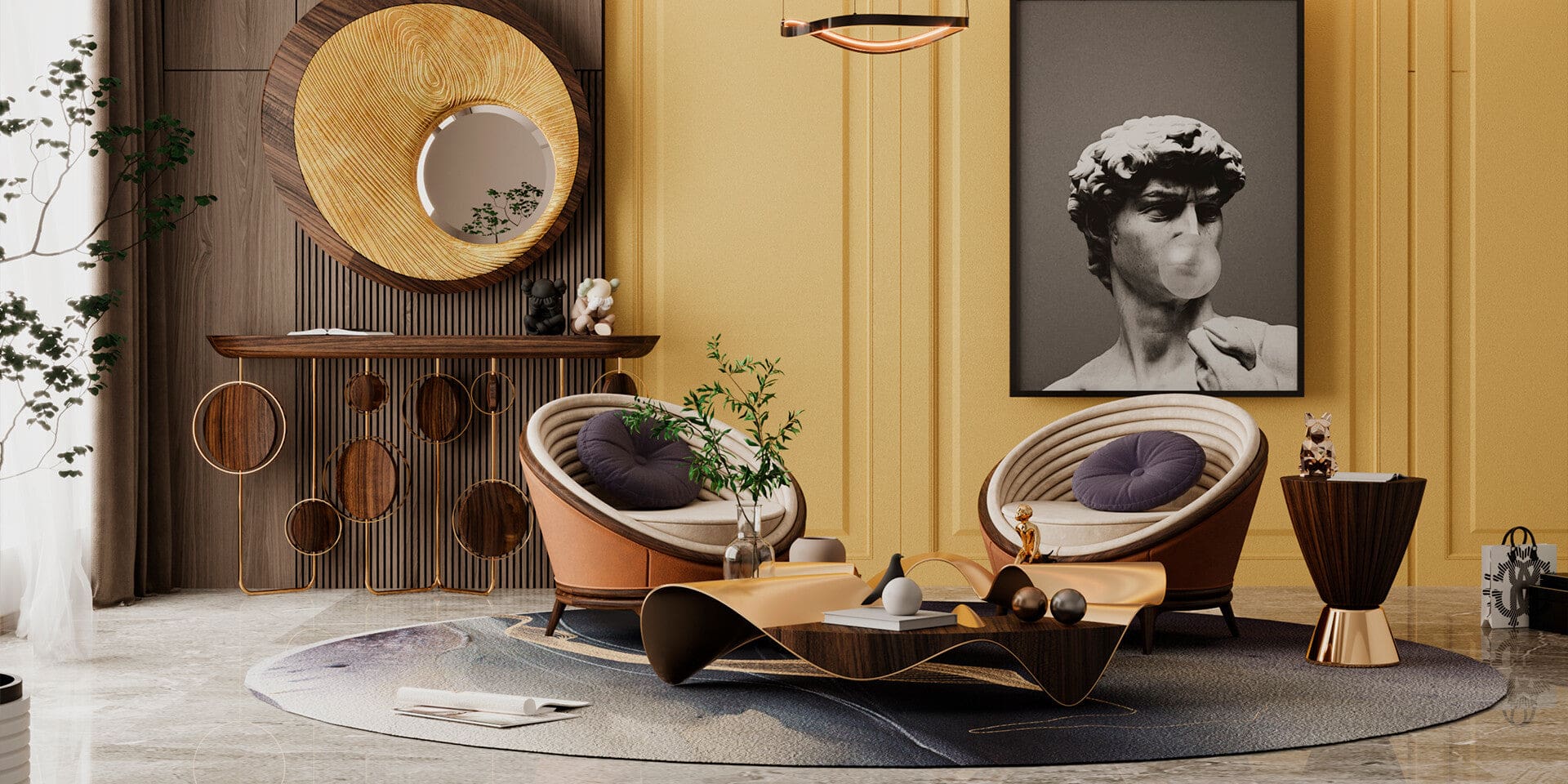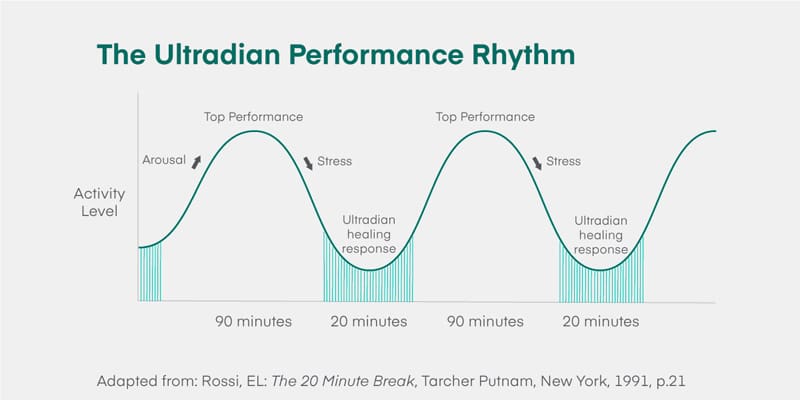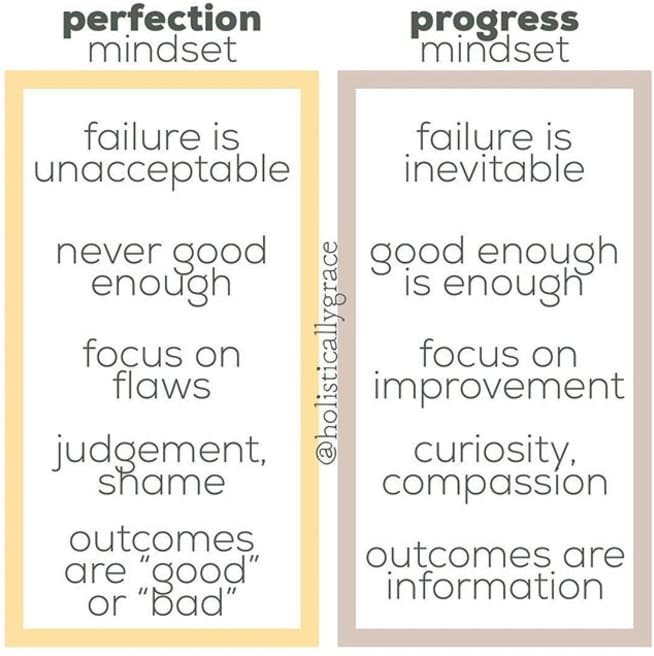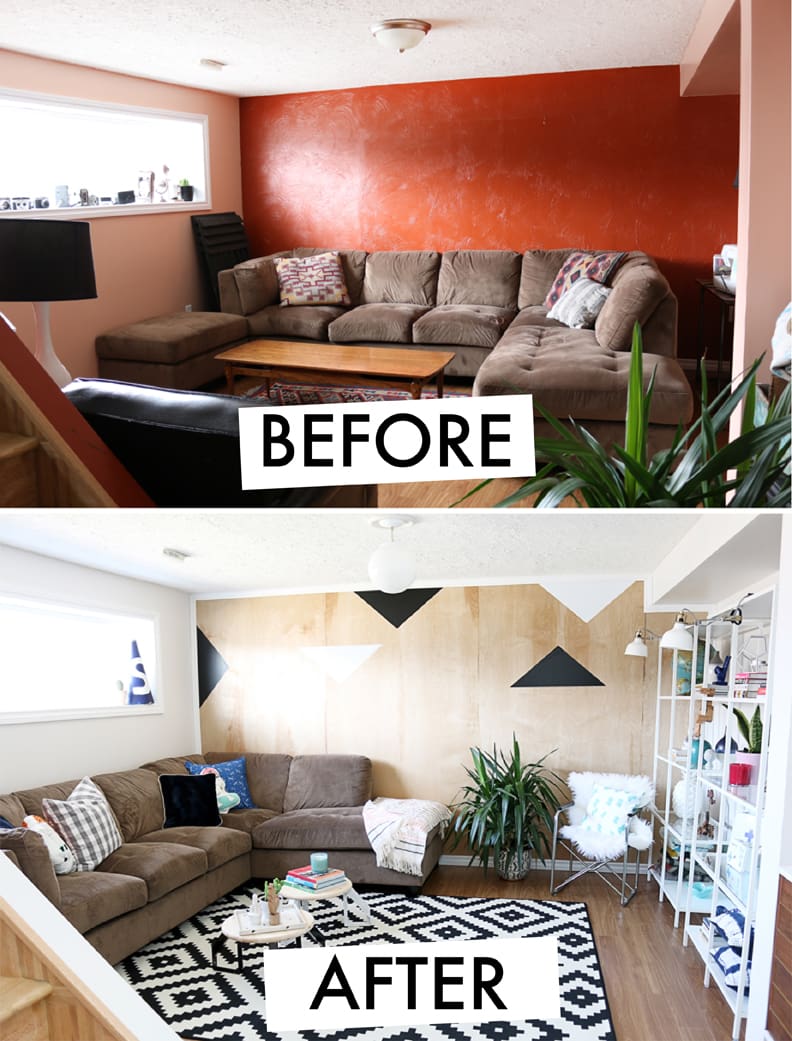DIY Room Decor Psychology: The Hidden Science Behind Why Your Projects Succeed or Fail
Understanding the psychology behind DIY room decor transforms random crafting into intentional space design. With the global home decor market valued at USD 960.14 billion in 2024, the surge in DIY projects reflects deeper neurological and psychological needs that traditional decorating advice overlooks. Your brain’s response to both creating and inhabiting personalized spaces follows predictable patterns that, when understood, dramatically improve your project success rates and long-term satisfaction with your living environment.
Table of Contents
- The Neuroscience Behind Your DIY Obsession
- The Planning High vs. Completion Crash
- Building Your Competency Confidence Cycle
- How Your Brain Creates Emotional Connections to DIY Spaces
- The Memory Palace Room Design Method
- Why More DIY Decor Isn’t Always Better
- The Hidden Economics of Your Aesthetic Choices
- When to Abandon DIY Projects (And When to Push Through)
- How DIY Room Decor Functions as Social Communication
- Managing Your DIY Aesthetic Over Time
- The Cultural Psychology of Personal Space
- Timing Your DIY Projects for Maximum Success
TL;DR
- Your brain releases more dopamine during DIY planning than completion, explaining why you have multiple unfinished projects
- Items you create yourself trigger different neural responses than purchased decor, creating stronger emotional connections to your space
- Visual processing limits mean 5-9 focal DIY elements per room optimize mood without causing overwhelm
- Strategic documentation and project auditing prevent the guilt-inducing accumulation of abandoned DIY work
- DIY room decor functions as non-verbal social communication, influencing how others perceive and interact with you
- Aligning DIY activities with your natural energy cycles maximizes creative output and completion rates
The Neuroscience Behind Your DIY Obsession
Your brain responds to both the environments you inhabit and the act of creating in ways that transform DIY room decor from random crafting into intentional space psychology. The neurochemical responses to hands-on creation explain why DIY becomes addictive and why certain projects succeed while others gather dust in corners.
The dopamine reward system activates differently during planning versus execution phases of DIY projects, creating predictable patterns of enthusiasm and completion rates. When you start sketching out that gallery wall or browsing Pinterest for aesthetic room decor inspiration, your brain floods with dopamine – the same neurotransmitter involved in addiction. This chemical rush during the planning phase often exceeds what you experience during actual completion, which explains why so many of us have seventeen half-finished projects scattered around our homes.
Spatial memory formation strengthens when you personally modify environments, making DIY room decor a tool for emotional regulation and memory enhancement. Your brain creates stronger neural pathways in spaces you’ve personally altered, turning your room into a cognitive landmark system. This phenomenon goes beyond simple decoration – it’s your brain literally rewiring itself to better navigate and remember spaces you’ve invested creative energy in.
Visual processing limitations in the brain create specific thresholds where personalization becomes overstimulation, requiring strategic placement over quantity. We’ll dive deeper into this concept later, but understanding that your brain can only process so many visual elements before experiencing fatigue changes how you approach DIY room decor entirely.
According to research, 35% of DIYers do home projects when inspiration strikes, highlighting the spontaneous neurochemical triggers that drive creative impulses rather than systematic planning approaches. This statistic reveals something crucial about how our brains work – we’re not rational decorators making calculated aesthetic decisions. We’re emotional beings responding to internal chemical signals that we barely understand.
Before diving into complex aesthetic room decor psychology, many homeowners need to address the foundational step of furniture removal to create the mental and physical space necessary for successful DIY transformations.
The Planning High vs. Completion Crash
Your brain releases dopamine during the planning phase of DIY projects, often more than during completion, explaining why you have seventeen half-finished room makeovers. This neurochemical pattern creates predictable cycles of enthusiasm followed by project abandonment unless you understand how to work with your brain’s reward system.
Dopamine peaks during anticipation and planning phases, creating higher satisfaction from imagining projects than completing them. Think about the last time you spent hours creating a Pinterest board for your dream bedroom or sketching out ideas for cute DIY room decor. That rush you felt? That was your brain’s reward system firing at maximum capacity. The problem is that once you start the actual work, dopamine levels naturally decline, leaving you wondering why you ever thought hand-painting 47 mason jars was a good idea.
Documentation of planning processes and micro-completion goals help maintain momentum through the natural dopamine decline that occurs during execution. When you photograph your planning sketches, create mood boards, and break large projects into smaller milestones, you’re essentially hacking your brain’s reward system to provide multiple dopamine hits throughout the process.
The recent surge in DIY Christmas decorations demonstrates this planning-completion gap perfectly. “Camille Styles” notes that crafting ornaments and garlands becomes gratifying when approached systematically, but many projects remain unfinished as the initial excitement of planning holiday decor fades during execution phases.
Here’s how to harness this pattern:
- Document your planning process with photos and sketches
- Set micro-completion goals (finish one wall, complete one corner)
- Plan your next project before completing the current one
- Create a “project graveyard” photo album to recognize patterns
Sarah, a marketing professional, noticed she had 12 unfinished DIY bedroom decor projects scattered throughout her apartment. By implementing the micro-completion strategy, she focused on finishing one corner of her living room with a gallery wall before moving to the next project. This approach allowed her to experience the satisfaction of completion while maintaining momentum for future projects.
Building Your Competency Confidence Cycle
Each successful DIY completion builds neural pathways that increase your willingness to tackle more complex room transformations, creating a compound effect in your decorating abilities. This cycle explains why some people become increasingly ambitious with their projects while others remain stuck at beginner levels.
Neural pathway strengthening through successful completion creates measurable increases in confidence for future projects. Every time you finish a DIY room decor project – even something as simple as hanging a few frames – your brain literally rewires itself to associate creative work with positive outcomes. This neuroplasticity means that confidence isn’t just a feeling; it’s a physical change in your brain structure.
Graduated skill building prevents overwhelm while systematically expanding your creative capabilities. The key is starting with projects that use tools you already own and gradually introducing one new skill or tool per project. This approach prevents the paralysis that comes from attempting advanced aesthetic room decor projects before you’ve built the foundational confidence.
Steps to build this cycle:
- Start with projects requiring tools you already own
- Document before/after photos with completion times
- Rate difficulty vs. satisfaction for each project
- Graduate to projects requiring one new skill or tool
| Project Complexity Level | Required Skills | Typical Completion Time | Confidence Building Impact |
|---|---|---|---|
| Beginner | Basic cutting, gluing | 1-3 hours | High initial satisfaction |
| Intermediate | Measuring, drilling, painting | 4-8 hours | Moderate skill development |
| Advanced | Multiple tools, planning | 1-3 days | Significant confidence boost |
| Expert | Complex techniques, problem-solving | 1+ weeks | Mastery-level satisfaction |
How Your Brain Creates Emotional Connections to DIY Spaces
Your brain creates stronger memories in spaces you’ve personally modified, making DIY room decor a tool for emotional regulation and memory enhancement. Items you make yourself trigger different neural responses than purchased items, creating deeper emotional connections to your space that influence daily mood and productivity.
The “creator’s attachment phenomenon” shows that self-made items activate different neural pathways than purchased objects, creating stronger emotional bonds. When you look at a store-bought piece of aesthetic room decor, your brain processes it as an external object. But when you look at something you created – even if it’s objectively less polished – your brain recognizes it as an extension of yourself. This recognition triggers a cascade of positive emotions and memories associated with the creation process.
Spatial memory enhancement occurs when you personally modify environments, turning your room into a cognitive landmark system. Your DIY bedroom decor doesn’t just make your space look better; it makes your brain work better. Each handmade element becomes a memory anchor that helps you navigate both physical and mental space more effectively.
Strategic placement of DIY elements as memory anchors can transform your space into a personal memory palace for improved recall and emotional regulation. This ancient technique becomes exponentially more powerful when combined with the emotional attachment you feel toward items you’ve created yourself.
Research shows that 63% of DIY consumers consider user-generated content the most trusted form of content, indicating that personal creation and authentic experiences resonate more strongly than professionally produced alternatives.
Many successful aesthetic room decor transformations begin with professional estate cleanout services that clear inherited items, creating space for personal creative expression while honoring family memories.
The Memory Palace Room Design Method
Intentionally placing DIY elements as memory anchors transforms your room into a personal memory palace, where each created element serves as a cognitive landmark. This ancient memory technique becomes more powerful when combined with the emotional attachment you feel toward items you’ve created yourself.
Memory palace techniques become more effective when anchors have personal emotional significance through DIY creation. The traditional memory palace method relies on familiar locations to store information, but when you create the anchors yourself, you’re adding layers of personal meaning that strengthen the entire system.
Strategic positioning at eye level and in frequently used sight lines maximizes the cognitive benefit of memory anchors. Your cute DIY room decor should be placed where you’ll naturally encounter it during daily routines, creating multiple opportunities for positive reinforcement and memory activation.
Steps to implement memory palace design:
- Choose one DIY element per wall as a “memory anchor”
- Associate each anchor with a specific goal or positive memory
- Position anchors at eye level in your most-used sight lines
- Rotate or update anchors seasonally to maintain neural engagement
Maria transformed her home office using the memory palace method by creating four distinct DIY elements: a hand-painted motivational quote above her desk (representing career goals), a photo collage of family memories on the left wall (personal relationships), a small succulent garden on the right (health and growth), and a vision board behind her chair (future aspirations). Each element serves as both aesthetic room decor ideas and a cognitive anchor for different life areas.
Why More DIY Decor Isn’t Always Better
More DIY room decor doesn’t equal better mood or productivity; understanding the tipping point where personalization becomes overstimulation prevents aesthetic anxiety. Your brain can only process a limited number of visual elements before experiencing fatigue, making strategic DIY placement more important than quantity.
The “7±2 rule” from cognitive psychology applies to visual processing in decorated spaces, limiting optimal focal elements to 5-9 per room. This principle, originally discovered in memory research, reveals that our brains have finite processing capacity for visual information. When you exceed this threshold with too much DIY room decor, you’re actually working against your brain’s natural limitations.
Visual processing load theory explains why cluttered DIY spaces can decrease rather than increase well-being. Every visual element in your room requires mental energy to process. When you fill your space with dozens of handmade items, you’re creating a constant low-level stress on your cognitive system, even if each individual piece brings you joy.
Strategic grouping and visual breathing space around DIY pieces optimize brain processing while maintaining personal expression. The solution isn’t to abandon aesthetic room decor entirely, but to be more intentional about placement and quantity.
Steps to optimize visual load:
- Use the “7±2 rule” – limit focal DIY elements to 5-9 per room
- Create visual breathing space around each DIY piece
- Group smaller DIY items into collections rather than scattering individually
- Implement the “one in, one out” rule for new DIY additions
DIY Project Evaluation Checklist:
- ☐ Does this project serve a specific functional or emotional purpose?
- ☐ Will this element compete with existing focal points?
- ☐ Can I group this with other similar items to reduce visual clutter?
- ☐ Does this project align with my room’s overall aesthetic vision?
- ☐ Am I creating this because I need it or because I’m avoiding other tasks?
When cute DIY room decor accumulates beyond optimal visual processing limits, professional decluttering services help restore the balance between personalization and mental clarity.
The Hidden Economics of Your Aesthetic Choices
DIY room decor operates on hidden economic principles that affect both your financial and emotional well-being in ways traditional decorating advice ignores. Understanding when to abandon DIY projects prevents the psychological and financial drain of pursuing projects that no longer serve your space or goals.
The sunk cost fallacy applies strongly to creative projects, causing people to continue investing in DIY work that no longer serves their needs. You know that feeling when you’ve already spent $50 and six hours on a project that’s clearly not working, but you keep going because you’ve “come this far”? That’s your brain’s economic wiring working against your best interests.
Value engineering principles can maximize aesthetic impact per dollar spent while building transferable skills. Smart DIY bedroom decor choices focus on projects that teach you techniques you can use again, rather than one-off creations that drain resources without building capability.
Cross-platform aesthetic arbitrage allows sourcing inspiration and materials from unexpected industries for unique results at lower costs. The most successful DIY room decor often comes from adapting ideas and materials from completely different contexts – using industrial supplies for home projects, or borrowing techniques from other crafts.
According to the 2023 American Housing Survey, homeowners completed over 50 million DIY projects, spending a total of more than USD 125 billion, demonstrating the massive economic impact of DIY culture and the importance of strategic project selection.
When to Abandon DIY Projects (And When to Push Through)
A systematic approach to evaluating ongoing DIY projects prevents the accumulation of guilt-inducing unfinished work that clutters both space and mind. The “6-month rule” and project audit framework help distinguish between temporary creative blocks and projects that truly no longer serve your vision.
Monthly project auditing prevents psychological accumulation of guilt-inducing unfinished work. Every unfinished project in your space carries emotional weight, creating a constant low-level stress that affects your overall well-being. Regular auditing helps you make conscious decisions about what deserves continued attention.
The pivot vs. persist decision matrix provides objective criteria for project continuation based on changing circumstances rather than emotional attachment. When you’re emotionally invested in cute DIY room decor projects, it becomes difficult to make rational decisions about whether to continue or abandon them.
Steps for project auditing:
- Photograph all current projects monthly
- Rate each project: excitement level (1-10), completion percentage, time since last work
- Apply the “6-month rule” – if untouched for 6 months, donate supplies
- Calculate cost per completed project to understand your DIY ROI
Project Abandonment Decision Matrix:
- Abandon if: Excitement level below 5/10, less than 25% complete, untouched for 6+ months, supplies cost exceeding $100
- Push through if: 50%+ complete, excitement level 7+/10, actively worked on within 30 days, teaches valuable transferable skill
This framework is particularly useful for DIY room decor for teens, where interests and aesthetic preferences change rapidly.
The 80/20 Room Impact Rule
Identifying which 20% of DIY elements create 80% of your room’s aesthetic impact allows for strategic investment of time and money. This principle helps you focus future DIY efforts on high-impact zones rather than spreading energy across less noticeable details.
Visual hierarchy in room design follows predictable patterns that can be measured through photographic analysis. When you enter a room, your eye follows specific pathways based on lighting, contrast, and positioning. Understanding these patterns helps you place DIY room decor where it will have maximum impact.
“First notice” factors when entering rooms correlate strongly with long-term satisfaction and aesthetic impact. The elements that catch your attention within the first three seconds of entering a space disproportionately influence your overall impression of the room.
Steps to identify high-impact elements:
- Take photos of your room from five different angles
- Cover different elements in photos digitally to see impact of removal
- Rank elements by “first notice” factor when entering the room
- Focus future DIY efforts on high-impact zones
| Room Zone | Impact Level | Typical DIY Projects | Time Investment | Satisfaction ROI |
|---|---|---|---|---|
| Entrance/Focal Wall | High (80%) | Gallery walls, statement pieces | 4-8 hours | Very High |
| Seating Area | Medium (60%) | Throw pillows, side tables | 2-4 hours | High |
| Corners | Low (30%) | Plants, small decor | 1-2 hours | Medium |
| Ceiling | Very Low (10%) | Lighting, hanging elements | 3-6 hours | Low |
This analysis reveals why spending hours on ceiling-mounted aesthetic room decor often feels unsatisfying – you’re investing high effort in a low-impact zone.
How DIY Room Decor Functions as Social Communication
Your DIY room decor functions as social communication, influencing how others perceive and interact with you in ways that extend beyond aesthetic appreciation. How you capture and share your DIY process affects both personal satisfaction and social connection, requiring intentional curation rather than random posting.
DIY spaces create “influence architecture” that subtly shapes guest behavior, emotions, and memory formation during visits. Every handmade element in your room sends signals about your personality, values, and creative capabilities. Guests unconsciously absorb these messages, forming impressions that extend far beyond the immediate visual impact of your DIY room decor.
Digital documentation strategy impacts both personal reflection and social connection outcomes through strategic timing and narrative framing. The way you photograph and share your creative process becomes part of the project itself, influencing both how others perceive your work and how you remember the experience.
Aesthetic choices function as non-verbal identity signals, communicating values and social affiliations to visitors without explicit conversation. Your selection of colors, materials, and styles broadcasts information about your cultural background, economic status, and personal priorities in ways you might not consciously realize.
The rise of bedroom Christmas decorating, as highlighted by “Elle Decor”, demonstrates how DIY seasonal decor in private spaces communicates hospitality and attention to detail, even in rooms guests rarely see, reflecting the psychological need to create cohesive personal environments.
Strategic DIY Documentation for Maximum Impact
Documenting your DIY process creates compelling narratives that build social connection and personal reflection, but requires strategic timing and framing. The before/during/after storytelling arc becomes more powerful when you balance vulnerability about challenges with demonstrations of creative problem-solving.
Storytelling arc documentation creates stronger social engagement than simple before/after comparisons through narrative psychology principles. People connect with process stories because they reveal the human struggle behind polished results. When you share the messy middle of your DIY bedroom decor project, you’re inviting others into your creative journey.
Aesthetic vulnerability balanced with competence demonstration builds authentic social connections while maintaining credibility. Showing mistakes and problem-solving approaches makes your work more relatable while still showcasing your growing skills and creative vision.
Steps for effective documentation:
- Take “before” photos from identical angles with consistent lighting
- Document one progress photo per major milestone, not every small step
- Include hands-in-frame shots to show scale and personal involvement
- Write brief captions explaining decisions, not just describing actions
DIY Documentation Best Practices Checklist:
- ☐ Consistent lighting across all photos
- ☐ Multiple angles showing context and detail
- ☐ Include process shots with hands/tools visible
- ☐ Document mistakes and problem-solving approaches
- ☐ Write captions explaining “why” not just “what”
- ☐ Share both successes and learning moments
Creating Conversation Catalysts Through Strategic Placement
Strategic positioning of unique DIY elements creates natural conversation starters and social interaction points within your space. Your DIY room decor subtly influences how guests behave, feel, and remember their time in your space, making you an unconscious architect of social experiences.
Conversation catalyst placement follows predictable social psychology patterns based on seating arrangements and natural sight lines. Positioning unusual or intriguing cute DIY room decor within six feet of main seating areas guarantees that guests will notice and comment on your creative work.
Multi-height DIY element positioning accommodates different guest perspectives and creates discovery opportunities throughout visits. Placing handmade items at various elevations ensures that both seated and standing guests encounter interesting details, extending engagement throughout their stay.
Steps for catalyst placement:
- Position one unusual DIY element within 6 feet of main seating areas
- Create “discovery zones” – DIY elements visible only from certain angles
- Include tactile DIY elements guests can touch and examine
- Place DIY elements at multiple height levels to accommodate different guests
James created conversation catalysts in his living room by positioning a hand-built geometric bookshelf at eye level near his sofa (visible immediately upon entering), a collection of handmade ceramic bowls on his coffee table (tactile and functional), and a series of small framed photographs at varying heights along a hallway (discovery zone). Guests consistently comment on and interact with these elements, leading to natural conversations about his creative process and shared interests.
Managing Your DIY Aesthetic Over Time
DIY room decor requires ongoing curation, evolution, and strategic retirement to maintain psychological and aesthetic benefits over time. Managing the tension between gradual aesthetic evolution and dramatic room transformations affects both budget and psychological well-being through systematic rotation approaches.
Seasonal aesthetic rotation systems prevent both staleness and constant upheaval while maximizing psychological benefits of environmental change. Your brain craves novelty but also needs stability. Finding the right balance requires intentional planning rather than impulsive redecorating when you’re bored with your current setup.
Creative lifecycle assessment helps determine when DIY elements have served their purpose without guilt-based decision making. Each piece you create has a natural lifespan based on your evolving tastes, changing life circumstances, and the physical wear of handmade items.
Gratitude-based removal processes maintain positive associations with creativity while preventing accumulation paralysis. When you approach decorating my room with appreciation for past creative efforts rather than criticism of outdated choices, you maintain enthusiasm for future projects.
As aesthetic preferences evolve, many homeowners find that professional garage clean-out services help transition retired DIY projects into storage or donation, maintaining the creative cycle without emotional attachment to outdated pieces.
Seasonal Rotation Systems That Actually Work
Creating systematic approaches to refreshing DIY room decor prevents both staleness and constant upheaval while maximizing the psychological benefits of environmental change. The 25% seasonal/75% permanent ratio maintains stability while allowing for regular creative expression and environmental novelty.
Systematic rotation prevents decision fatigue while maintaining optimal levels of environmental novelty for continued psychological benefit. When you establish clear guidelines for what changes and what stays constant, you eliminate the overwhelming feeling of having to reinvent your entire space every few months.
Storage systems for off-season elements enable rotation without permanent disposal, reducing commitment anxiety around aesthetic changes. Knowing that you can bring back favorite DIY bedroom decor pieces in future seasons makes it easier to pack them away when they no longer fit your current mood or needs.
Steps for rotation systems:
- Designate 25% of DIY elements as “seasonal” and 75% as “permanent”
- Create storage systems for off-season DIY elements
- Schedule quarterly “aesthetic audits” to evaluate element effectiveness
- Maintain a “rotation calendar” to prevent decision fatigue
Seasonal Rotation Planning Template:
- Spring: Light colors, fresh flowers, nature-inspired elements
- Summer: Bright accents, outdoor-inspired pieces, lightweight textiles
- Fall: Warm tones, textured materials, harvest-themed elements
- Winter: Cozy textures, warm lighting, metallic accents
The Creative Lifecycle Assessment Method
Evaluating DIY elements based on current relevance, emotional connection, and aesthetic contribution helps determine when pieces have served their purpose. Treating your evolving DIY aesthetic as layers of personal history creates meaningful connections to past selves while allowing for growth and change.
Monthly rating systems provide objective data for removal decisions while honoring the emotional investment in created pieces. When you track how you feel about each element over time, patterns emerge that help you make confident decisions about what to keep, modify, or retire.
Photographic documentation before removal maintains memory connections without requiring physical storage space. Taking final photos of retiring DIY room decor preserves the emotional value while freeing up physical and mental space for new creative expressions.
Steps for lifecycle assessment:
- Rate each DIY element monthly: aesthetic value, emotional connection, practical function
- Photograph elements before removal to maintain memory without physical storage
- Repurpose materials from retired projects into new creations
- Create an “aesthetic timeline” documenting your creative evolution
This approach works particularly well for room decor aesthetic changes that reflect major life transitions or evolving personal style.
The Cultural Psychology of Personal Space
DIY room decor functions as cultural expression and identity formation, requiring understanding of how aesthetic choices communicate across different social and cultural contexts. Incorporating cultural heritage into DIY projects creates deeper personal meaning while navigating the balance between tradition and contemporary aesthetics.
Heritage integration strategies honor family history while creating personally relevant contemporary expressions through artifact reimagining techniques. When you transform inherited items through DIY techniques, you’re creating a bridge between past and present that honors both your heritage and your individual creative vision.
Subculture aesthetic integration requires distinguishing between authentic personal preferences and social media-driven performative choices. The pressure to create Instagram-worthy aesthetic rooms can lead to adopting styles that don’t genuinely resonate with your personality or cultural background.
Cultural symbol translation adapts traditional elements for modern DIY applications while maintaining meaningful cultural connections. This process involves understanding the deeper significance of cultural elements rather than simply copying surface-level visual details.
Authentic Heritage Integration Without Appropriation
Transforming inherited items through DIY techniques honors family history while creating personally relevant aesthetic expressions. Blending cultural heritage with contemporary aesthetics through DIY projects creates unique personal style that honors multiple identity aspects without falling into superficial adoption patterns.
Family artifact reimagining preserves historical context while enabling personal creative expression through documented modification processes. When you modify inherited pieces, documenting the original context and your creative process maintains respect for the item’s history while allowing for personal interpretation.
Modern fusion techniques require research and understanding of cultural elements rather than surface-level aesthetic borrowing. Creating authentic DIY bedroom decor that incorporates cultural elements means understanding the meaning and significance behind traditional designs, colors, and materials.
Steps for heritage integration:
- Photograph family items before modification to preserve original documentation
- Research historical context and original purpose of inherited pieces
- Identify one element (color, texture, shape) to echo in new DIY projects
- Create “heritage corner” where family pieces anchor DIY additions
Heritage Integration Checklist:
- ☐ Document original item’s history and significance
- ☐ Research cultural context and meaning
- ☐ Identify respectful modification approaches
- ☐ Plan complementary DIY elements that honor tradition
- ☐ Create narrative connecting past and present
- ☐ Share story with family members for feedback
This approach works especially well for DIY room decor for teens who are exploring their cultural identity while developing personal style.
Timing Your DIY Projects for Maximum Success
Time perception and project pacing in DIY room decor create psychological effects that determine long-term satisfaction and completion rates beyond simple time management. Aligning DIY activities with your natural circadian rhythms maximizes creative output and reduces project abandonment rates.
Chronotype-based scheduling aligns creative work with natural energy cycles, preventing the common mistake of attempting detail work during low-focus periods. Your brain has predictable peaks and valleys of creative energy throughout the day. Working against these natural rhythms leads to frustration and poor-quality results.
Micro-session strategies break projects into manageable timeframes while maintaining forward momentum on larger transformations. Instead of dedicating entire weekends to cute DIY room decor projects, breaking work into 15-30 minute focused sessions prevents overwhelm while maintaining steady progress.
Seasonal energy allocation recognizes biological rhythm changes and plans project complexity accordingly. Your motivation and energy levels naturally fluctuate with seasons, daylight exposure, and weather patterns. Planning complex projects during your high-energy seasons and simple maintenance during low-energy periods improves success rates.
Before beginning complex DIY projects, many homeowners benefit from professional appliance pick-up services to remove outdated items, creating both physical space and mental clarity for creative work.
Working With Your Natural Energy Cycles
Mapping your daily energy cycles to specific DIY tasks prevents the common mistake of attempting detail work during low-focus periods. Breaking DIY projects into 15-30 minute focused sessions prevents overwhelm while maintaining forward momentum on room transformations.
Peak creative window identification through energy tracking enables optimal task-to-time matching for maximum productivity and satisfaction. When you understand your personal energy patterns, you can schedule demanding creative work during peak hours and reserve simple tasks for low-energy periods.
Seasonal motivation patterns can be predicted and planned for, allowing strategic project timing that works with rather than against natural biological rhythms. Most people experience higher motivation for DIY bedroom decor projects during spring and fall, while winter and summer present different challenges and opportunities.
Steps for chronotype optimization:
- Track energy levels hourly for one week using a 1-10 scale
- Assign high-energy periods to complex/creative tasks, low-energy to prep/cleanup
- Schedule planning sessions during your natural “thinking time”
- Reserve physical assembly for periods when you crave movement
Energy Tracking Template:
- Morning (6-10 AM): Energy level ___/10, Best for: ___________
- Midday (10 AM-2 PM): Energy level ___/10, Best for: ___________
- Afternoon (2-6 PM): Energy level ___/10, Best for: ___________
- Evening (6-10 PM): Energy level ___/10, Best for: ___________
Overcoming Perfectionism Paralysis
Balancing quality standards with completion momentum requires conscious calibration to prevent perfectionism paralysis while maintaining aesthetic integrity. Establishing clear criteria for project completion prevents endless tweaking that delays room enjoyment and next project initiation.
“Good enough” threshold setting provides objective completion criteria that prevent endless revision cycles while maintaining quality standards. When you define what “finished” means before starting a DIY room decor project, you create clear stopping points that prevent the perfectionist trap of endless refinement.
Iteration-based improvement cycles reduce first-attempt pressure while ensuring continued aesthetic evolution through planned enhancement rounds. Instead of expecting perfection on the first try, planning for “Version 2.0” improvements reduces anxiety while maintaining quality standards.
Steps for threshold setting:
- Define “minimum viable aesthetic” for each project before starting
- Set specific completion criteria (e.g., “wall is 90% covered,” “visible from main entrance”)
- Create “improvement later” lists for post-completion enhancements
- Photograph projects at completion to prevent immediate dissatisfaction
Perfectionism Recovery Strategies:
- Set 80% completion as “done” threshold
- Use timer-based work sessions to prevent endless tweaking
- Create “Version 2.0” plans for future improvements
- Practice gratitude for completed elements before critiquing
- Share work-in-progress with supportive friends for perspective
Before you can implement these neuroscience-backed placement strategies or create conversation catalyst zones, you need to clear the visual and physical clutter that prevents your brain from processing your space effectively. Jiffy Junk’s comprehensive scrap metal pick-up service creates the mental and physical breathing room necessary for the creative planning phase where dopamine levels peak.
Their same-day service addresses the momentum problem in DIY room transformation. When inspiration strikes and you’re ready to reimagine your space, waiting weeks for removal creates the gap where enthusiasm dies. Ready to clear the canvas for your next DIY masterpiece? Contact Jiffy Junk today for professional decluttering that sets the stage for successful room transformation.
Final Thoughts
Your DIY room decor journey operates on deeper psychological and social levels than most people realize. The neuroscience behind creative satisfaction, the economics of aesthetic investment, and the social currency of personalized spaces all influence whether your projects succeed or join the graveyard of abandoned crafts.
Success isn’t about having the most Pinterest-worthy room or completing every project you start. It’s about understanding your brain’s reward systems, working with your natural energy cycles, and creating spaces that genuinely support your well-being rather than just looking good in photos.
The most transformative DIY projects happen when you align your creative impulses with strategic thinking about visual processing, social communication, and long-term aesthetic evolution. Your room becomes more than decorated space—it becomes a tool for memory enhancement, emotional regulation, and authentic self-expression.
Successful DIY room decor requires integration of neuroscience principles, economic strategy, and social psychology rather than purely aesthetic considerations. When you understand the hidden forces driving your creative decisions, you can work with them instead of against them.
Long-term satisfaction comes from understanding your personal creative cycles and designing projects that work with rather than against your natural patterns. The most impactful room transformations balance personal expression with strategic thinking about visual processing, social communication, and sustainable aesthetic evolution.
Rachel discovered her chronotype by tracking energy levels for two weeks. She found her peak creativity occurred between 9-11 AM and 7-9 PM, while her lowest energy hit around 2-4 PM. By scheduling detailed painting work during morning hours, planning sessions in the evening, and reserving simple cleanup tasks for her afternoon slump, her project completion rate increased from 30% to 85% over six months.
Understanding the psychology behind your DIY room decor transforms random crafting into intentional space design that serves both your aesthetic vision and your psychological well-being.
